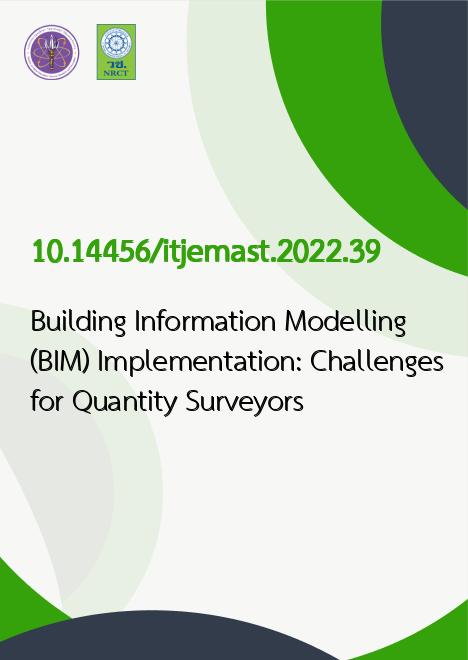
|
Building Information Modelling (BIM) Implementation: Challenges for Quantity Surveyors |
|---|---|
| รหัสดีโอไอ | |
| Creator | Tee Yun Ying, Ernawati Mustafa Kamal, Muneera Esa |
| Title | Building Information Modelling (BIM) Implementation: Challenges for Quantity Surveyors |
| Contributor | - |
| Publisher | TuEngr Group |
| Publication Year | 2565 |
| Journal Title | International Transaction Journal of Engineering, Management, & Applied Sciences & Technologies |
| Journal Vol. | 13 |
| Journal No. | 2 |
| Page no. | 13A2R: 1-10 |
| Keyword | Building Information Modelling (BIM), Quantity surveying, BIM collaboration, Limitation of BIM, Malaysian Construction Industry, Challenge of BIM implementation, BIM teamwork, Construction management, BIM drawback, BIM application, QS profession. |
| URL Website | http://TuEngr.com/Vol13-2.html |
| Website title | ITJEMAST V13(2) 2022 @ TuEngr.com |
| ISSN | 2228-9860 |
| Abstract | Building Information Modelling (BIM) is a multidimensional model platform that functions as an information centre and database for projects. It has become the current trend in the construction industry as the application of BIM software offers a lot of advantages such as digitalization, communication, and collaboration among project participants. However, there are rising concerns on the readiness of quantity surveyors to cope with this digital technology. Hence, this study aims to assess the implication and challenges of BIM on the quantity surveying (QS) profession in Malaysia. This research utilised qualitative methods in which semi-structured interview was conducted with quantity surveyors that use BIM in their practices. Data abstracted from interview transcripts were then coded through NVivo and analysed using the content analysis method. The findings show that challenges posed by BIM implementation are all related to each other. Narrow BIM application is the main primary challenge. The unfamiliarity of the industry towards BIM leads to the non-utilization of BIM models and files. This research elaborates fundamental challenges faced by the QS profession and provides a way forward to integrate the traditional practice into the current technology. |